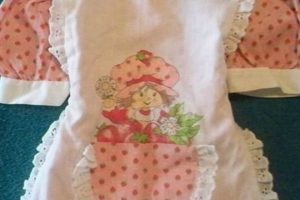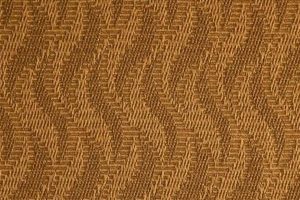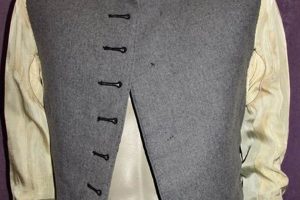Items originating from the Halston fashion house’s past collections, typically dating from the 1970s and 1980s, represent a specific segment of the pre-owned garment market. These articles often exhibit the minimalist, fluid designs characteristic of the brand’s founder, Roy Halston Frowick. For example, a draped jersey dress from the mid-1970s would be categorized within this classification.
The desirability of these historical garments stems from several factors. They provide tangible connections to a significant period in American fashion history, reflecting a cultural shift towards simpler silhouettes and luxurious fabrics. Further, acquiring these pieces allows individuals to own a piece of design history and often represents a sustainable approach to fashion consumption. The unique craftsmanship and limited availability contribute to their enduring appeal.
The following analysis will delve into aspects such as identifying authentic items, understanding valuation factors within the collector’s market, methods for proper preservation, and the influence of the designer on contemporary trends.
Acquiring and Maintaining Garments from the Halston Era
This section offers guidance on securing and preserving clothing from the Halston era, focusing on authentication, care, and value preservation.
Tip 1: Authentication is Paramount: Thoroughly examine labels, construction, and fabric composition. Halston pieces typically featured high-quality materials and meticulous craftsmanship. Consult reputable vintage dealers or online resources to compare details with known authentic examples.
Tip 2: Assess Condition Critically: Evaluate garments for signs of wear, damage, or alteration. Minor imperfections are acceptable in vintage items, but significant flaws can impact value and longevity. Prioritize pieces in excellent or very good condition.
Tip 3: Fabric Knowledge is Essential: Familiarize oneself with the textiles commonly used in Halston designs, such as Ultrasuede, jersey, and silk chiffon. Understanding fabric properties informs appropriate cleaning and storage techniques.
Tip 4: Storage Techniques are Crucial: Store these garments in a cool, dry environment away from direct sunlight. Use padded hangers for dresses and blouses to maintain shape, and acid-free tissue paper to protect delicate embellishments.
Tip 5: Cleaning Requires Expertise: Opt for professional dry cleaning services specializing in vintage textiles. Avoid harsh chemicals or excessive heat, which can damage delicate fabrics and dyes. Test cleaning methods on inconspicuous areas first.
Tip 6: Repair Carefully and Sparingly: Address minor repairs promptly using methods appropriate for the specific fabric and construction. Consider consulting a professional tailor experienced in vintage garment restoration.
Tip 7: Document Provenance Whenever Possible: Maintain records of purchase, appraisals, and any restoration work performed. This documentation enhances the garment’s historical value and appeal to collectors.
Adhering to these guidelines ensures the longevity and preservation of garments from this era, safeguarding their value and historical significance.
The subsequent section will address specific Halston designs and their impact on the fashion industry.
1. Minimalist design aesthetic
The minimalist design aesthetic is a fundamental component of articles originating from Halston’s design house. This design philosophy emphasizes clean lines, unadorned surfaces, and a focus on form and silhouette. The effect is a streamlined and elegant appearance that prioritizes comfort and movement. Garments from this era, characterized by the elimination of unnecessary embellishments and intricate detailing, directly reflect this principle. A practical example is the simple yet sophisticated jersey knit dress, which relies on its drape and the quality of the fabric for visual impact, rather than overt ornamentation. The absence of extraneous details allows the wearer to become the focal point, enhancing the garment’s timeless appeal. Understanding this connection is crucial for accurate identification, as it helps distinguish authentic Halston pieces from later interpretations or imitations that might incorporate more decorative elements.
The importance of this design approach extends beyond mere aesthetics; it reflects a broader cultural shift towards simplicity and functionality during the 1970s. This was a departure from the more structured and ornate styles of previous decades, aligning with a growing desire for liberation and self-expression. Halston adeptly captured this sentiment through designs that were both luxurious and easy to wear. Consider the iconic Ultrasuede shirtdress. Its deceptively simple construction belies its sophisticated appeal, and its practicality contributed significantly to its widespread popularity. The minimalist ethos also facilitated versatility, allowing individual pieces to be styled in various ways, adapting to different occasions and personal preferences. This adaptability further solidified the brand’s relevance and longevity, ensuring that its designs continue to resonate with contemporary consumers.
In summary, the minimalist design aesthetic is inextricably linked to garments originating from the Halston era, influencing their form, function, and lasting appeal. Recognizing this connection is essential for anyone seeking to appreciate, collect, or preserve these significant pieces of fashion history. The challenge lies in discerning subtle nuances of design and construction to ensure authenticity. This understanding contributes to a broader appreciation of Halston’s legacy and its enduring impact on the fashion industry.
2. Luxurious fabric selection
The identification and appreciation of garments from the Halston era necessitate a thorough understanding of the luxurious fabrics employed in their construction. These materials were integral to the brand’s aesthetic and contributed significantly to the garments’ drape, feel, and overall quality.
- Silk Jersey’s Fluidity
Silk jersey, a hallmark of Halston’s designs, provided a unique combination of fluidity and comfort. This lightweight knit fabric draped gracefully against the body, creating the soft, flowing silhouettes characteristic of the era. Examples include the iconic halter dresses and wrap gowns, where the silk jersey’s inherent stretch allowed for effortless movement and a flattering fit. Its delicate nature necessitates careful preservation to prevent snags and distortions.
- Ultrasuede’s Innovative Texture
The utilization of Ultrasuede, a synthetic microfiber fabric, represented an innovative approach to material selection. Halston popularized this material, which offered a soft, suede-like texture with enhanced durability and ease of care compared to natural suede. The Ultrasuede shirtdress, a signature piece, exemplified the fabric’s versatility and modern appeal. Understanding the specific composition of Ultrasuede is crucial for proper cleaning and maintenance, as traditional dry cleaning methods may cause damage.
- Chiffon’s Ethereal Quality
Silk chiffon, known for its lightweight and sheer qualities, was frequently used in evening wear and more delicate designs. This fabric lent an ethereal and romantic touch to Halston’s creations, adding dimension and movement. Layering chiffon was a common technique to create depth and visual interest. The inherent fragility of chiffon requires specialized handling and storage to prevent tears and wrinkles.
- Cashmere’s Soft Warmth
For cooler seasons or more luxurious applications, cashmere was employed for sweaters, wraps, and accessories. The soft, warm texture of cashmere provided a tactile contrast to the smoother fabrics like silk jersey. Its delicate fibers necessitate careful washing or dry cleaning to prevent shrinkage and pilling. Identifying the specific type of cashmere used can inform appropriate care techniques.
These luxurious fabric selections were not merely decorative elements but were integral to the overall design philosophy. They informed the garments’ silhouettes, dictated their movement, and contributed to their perceived value. Accurate identification of these materials is paramount for both authentication and proper preservation, ensuring that these historical pieces retain their original beauty and integrity.
3. Iconic silhouettes defined
The enduring legacy of vintage Halston clothing is inextricably linked to the designer’s creation and popularization of specific, readily identifiable silhouettes. These forms, characterized by their minimalist elegance and functional sophistication, significantly shaped the sartorial landscape of the 1970s and continue to influence contemporary design.
- The Halter Dress
The halter dress, a defining piece, embodied the era’s liberation and confident sensuality. This design, featuring a neckline that wraps around the back of the neck and exposes the shoulders, was frequently rendered in fluid silk jersey. Its appeal lay in its ability to be both glamorous and comfortable, suitable for both daytime events and evening galas. Examples include the designs worn by Liza Minnelli and Bianca Jagger, solidifying its place as a symbol of the Studio 54 era. The garment’s significance stems from its flattering fit and ease of movement, representing a departure from more structured and restrictive styles.
- The Caftan
The caftan, a loose-fitting, flowing robe, offered a relaxed yet sophisticated alternative to traditional evening wear. Often crafted from luxurious materials such as silk or chiffon, the caftan was favored for its comfort and versatility. It could be worn as a poolside cover-up or dressed up with accessories for a formal occasion. Halston’s caftans were characterized by their clean lines and understated elegance, reflecting his minimalist design philosophy. Its influence can be seen in modern resort wear and bohemian-inspired styles.
- The Shirtdress
The Ultrasuede shirtdress, a deceptively simple design, achieved iconic status through its innovative use of material and its practical yet stylish appeal. Constructed from a synthetic microfiber that mimicked the look and feel of suede, this dress offered durability and ease of care without sacrificing luxury. Its tailored silhouette and button-down front provided a versatile option for both professional and casual settings. The shirtdress exemplified Halston’s ability to create timeless pieces that transcended fleeting trends.
- The Wrap Dress
The wrap dress, popularized by Diane von Furstenberg but also embraced and refined by Halston, featured a figure-flattering design that could be adjusted to fit a variety of body types. Its adjustable closure and comfortable fit made it a popular choice for women seeking both style and practicality. Often made from jersey knit, the wrap dress epitomized the era’s emphasis on ease of movement and effortless elegance. Its enduring appeal is evident in its continued presence in contemporary fashion collections.
These iconic silhouettes, defined and popularized through garments originating from the Halston era, represent a significant contribution to fashion history. Their enduring appeal lies in their blend of minimalist design, luxurious materials, and functional sophistication, solidifying their place as timeless classics. These silhouettes continue to be reinterpreted and reimagined by contemporary designers, demonstrating the lasting influence of the brand on the fashion industry.
4. Cultural influence legacy
The enduring appeal and significance of garments originating from the Halston era are directly linked to the cultural influence the brand exerted during its peak and continues to represent. The minimalist designs and luxurious fabrics embodied a shift in societal values, reflecting a move towards greater personal freedom, a celebration of individuality, and a rejection of traditional, more restrictive norms. The brand’s association with prominent figures from the art, music, and entertainment industries cemented its status as a cultural icon, further amplified by its presence in influential venues such as Studio 54. The resulting cultural impact directly affects the desirability and valuation of these items in the vintage market today. For instance, a simple Halston dress worn by a notable celebrity during the 1970s would carry a significantly higher value due to its historical association with that figure and the cultural moment they represent.
The practical significance of understanding this cultural legacy lies in its importance for authentication, valuation, and preservation. Identifying genuine pieces requires familiarity with the brand’s aesthetic, construction techniques, and the specific cultural context in which they were produced. Assessing the value of items must also consider their association with key cultural events or figures, as this adds a layer of historical significance beyond the inherent value of the garment itself. Preservation efforts can be tailored to maintain the garment’s cultural integrity, such as avoiding alterations that would compromise its historical accuracy. Furthermore, the cultural legacy informs how these items are displayed, curated, and appreciated, whether in museum exhibitions or private collections.
In summary, the cultural influence legacy is an inseparable component of garments originating from the Halston era. This influence manifests through shifts in societal values, associations with prominent figures, and the brand’s presence in key cultural venues. Understanding this connection is crucial for the proper identification, valuation, and preservation of these items, ensuring that their historical significance is maintained for future generations. The challenge lies in accurately assessing the cultural context surrounding specific items and recognizing the subtle nuances that contribute to their overall value and appeal.
5. Collectibility and valuation
The collectibility of garments from the Halston era directly impacts their valuation within the vintage market. Several factors contribute to the desirability of these items, including rarity, condition, historical significance, and provenance. A garment’s collectibility is often determined by its design, the fabric used, and its association with a specific collection or cultural event. Higher collectibility generally translates to increased market value. For instance, a limited-edition Halston gown worn by a celebrity at Studio 54 would command a significantly higher price than a more common, mass-produced piece from the same period. This is due to its unique design, its connection to a specific historical moment, and its potential provenance.
Understanding the determinants of collectibility is crucial for accurate valuation. The condition of a garment is paramount; items in excellent or near-mint condition typically fetch the highest prices. The presence of original labels, tags, and accompanying documentation, such as purchase receipts or photographs, further enhances value. Provenance, or the garment’s history of ownership, can significantly influence its desirability, especially if the item was previously owned by a notable figure or featured in a significant publication. The rarity of a particular design also plays a crucial role. Garments from limited-production runs or those featuring unique embellishments are often highly sought after by collectors. Valuation involves assessing these factors and comparing the item to similar pieces sold at auction or through reputable vintage dealers. Expert appraisals are often necessary to determine a fair market value, especially for high-value items.
The intersection of collectibility and valuation presents challenges for both buyers and sellers. Accurate identification of authentic items requires specialized knowledge and expertise. The vintage market is susceptible to counterfeiting, and inexperienced buyers may unknowingly purchase inauthentic items. Valuation can be subjective, and prices can fluctuate depending on market trends and collector demand. Preserving these garments is essential to maintaining their collectibility and value. Proper storage, cleaning, and repair techniques are crucial to prevent damage and deterioration. Despite these challenges, the allure of owning a piece of fashion history continues to drive the market for garments originating from the Halston era, ensuring their enduring appeal and significant valuation.
Frequently Asked Questions
The following addresses common inquiries regarding the acquisition, authentication, and preservation of vintage Halston clothing.
Question 1: How can authentication of vintage Halston clothing be reliably performed?
Verification involves careful examination of labels, stitching, and fabric composition. Consult reputable vintage dealers or online resources specializing in designer authentication. Cross-reference specific design details with known authentic examples from the era.
Question 2: What factors primarily influence the valuation of vintage Halston clothing within the collector’s market?
Condition, rarity, historical significance, and provenance are key determinants. Garments in excellent condition, associated with prominent figures, or originating from limited collections command higher prices.
Question 3: Which fabrics are most commonly found in garments from the Halston era?
Silk jersey, Ultrasuede, chiffon, and cashmere are prevalent. These fabrics contributed to the brand’s signature aesthetic and luxurious feel. Identifying specific materials aids in proper care and preservation.
Question 4: What are recommended storage practices for preventing damage to vintage Halston clothing?
Store items in a cool, dry environment away from direct sunlight. Use padded hangers for garments and acid-free tissue paper for delicate embellishments. Proper storage minimizes fabric degradation and maintains garment shape.
Question 5: What cleaning methods are appropriate for delicate garments from the Halston era?
Professional dry cleaning specializing in vintage textiles is recommended. Avoid harsh chemicals and excessive heat. Test cleaning methods on inconspicuous areas prior to full application.
Question 6: How can minor repairs to vintage Halston clothing be executed without compromising historical integrity?
Address repairs promptly using techniques appropriate for the specific fabric and construction. Consult a tailor experienced in vintage garment restoration to ensure historically accurate methods.
Understanding these aspects is essential for preserving the value and historical significance of garments from this era.
The subsequent discussion will explore the impact of Halston’s designs on contemporary fashion trends.
Conclusion
The preceding analysis has delineated critical aspects pertaining to garments originating from the Halston era. Authentication methods, valuation determinants, fabric considerations, preservation techniques, and cultural significance have been examined to provide a comprehensive understanding of these historical artifacts. The iconic silhouettes and the minimalist aesthetic have been contextualized within the broader landscape of 1970s fashion, underscoring their lasting impact on design principles.
Continued research and diligent preservation efforts remain essential to safeguard these tangible representations of a pivotal moment in fashion history. Recognizing the inherent value, both monetary and cultural, necessitates a commitment to responsible stewardship, ensuring that future generations may appreciate the enduring legacy of vintage halston clothing.







